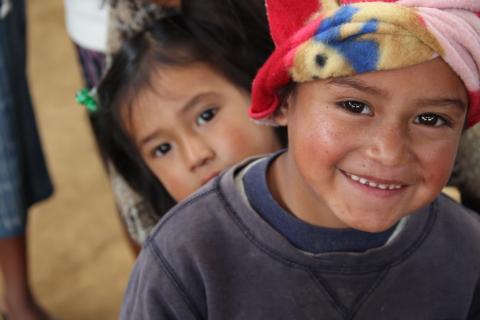Preventing and treating growth faltering in Maya children
Research snapshot1
The Maya people are descended from the indigenous inhabitants of southern Mexico, Guatemala and adjacent regions of Central America. In Guatemala, 50% of infants and children are stunted (very low height-for-age) and some rural Maya regions have >70% children stunted. A large, longitudinal, intergenerational database was created that included data from three sources. This report presents brief descriptions of the data and explains how they may serve to improve healthy birth, growth and development globally.
The first source is the Universidad del Valle de Guatemala (UVG) study, a large, mixed-longitudinal study of human growth in Latin America that contains 138,000 cross-sectional sets of data (girls and boys aged four to 18 years). Between 1953 and 1999, children were assessed annually for height, weight, skinfolds, upper-arm circumference, permanent teeth erupted, hand-grip strength, general cognitive ability and reading performance, and a hand-and-wrist radiograph was taken. These data may help determine the most sensitive chronological ages and maturational stages for risks of stunting and neuro-cognitive impairment.
The second source is a set of child growth and intergenerational studies among the Maya in Mexico, performed over decades. This has resulted in many published papers, highlighting the development of the nutritional dual-burden phenomenon (coexistence of stunting with overweight/ obesity) and the impact of maternal grandmother’s childhood health status on fat accumulation in grandchildren. Further analysis may highlight relative contributions of the mother and grandmother on linear and mass growth of children.
The third dataset is from studies conducted since 1992 with Maya migrants in Los Angeles and Florida. Children had a marked increase in average height (11cm) and reduction in stunting. Most of these children were born in the United States and had access to clean drinking water, pre- and post-natal health care, food subsidies and a general positive environment, despite low socioeconomic status. The change in average height occurred in less than ten years but was accompanied by a marked rise in overweight/obesity. The sharing of these data may enable robust analyses to determine the interactions of pathophysiological causal pathways and genetic, epigenetic, environmental, social and demographic factors that directly affect the sensitivity, severity and duration of growth faltering and impaired neurocognitive development.
Footnotes
1Varela-Silval MI, Bogin B, Sobral JA, Dickinson F and Monserrat-Revillo S. (2016). Deep data science to prevent and treat growth faltering in Maya children. European Journal of Clinical Nutrition (2016) 70, 679–680.


